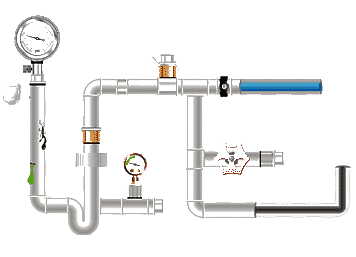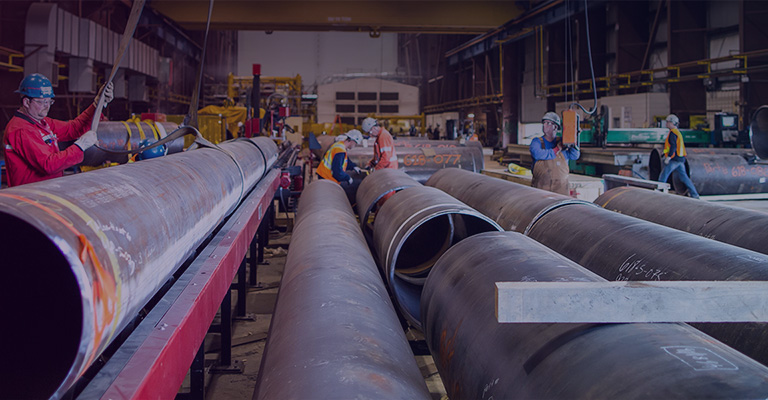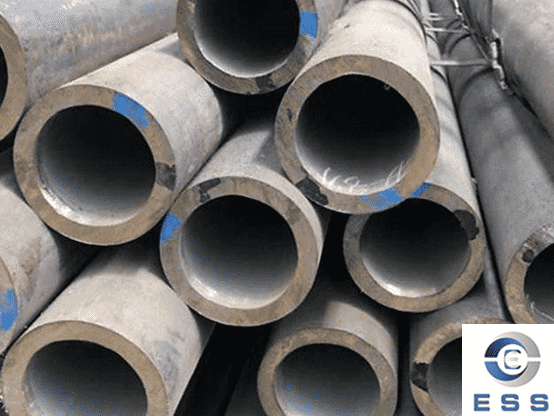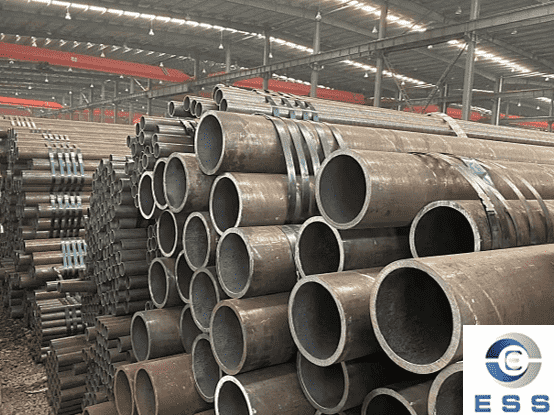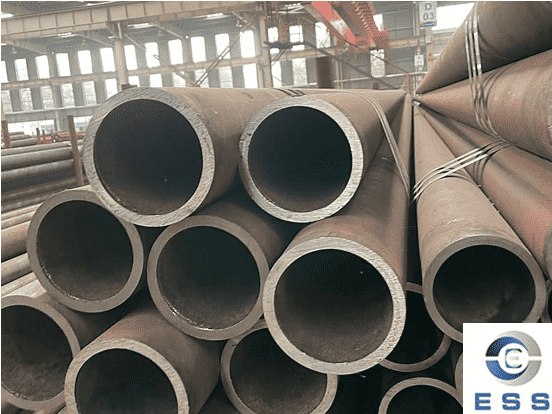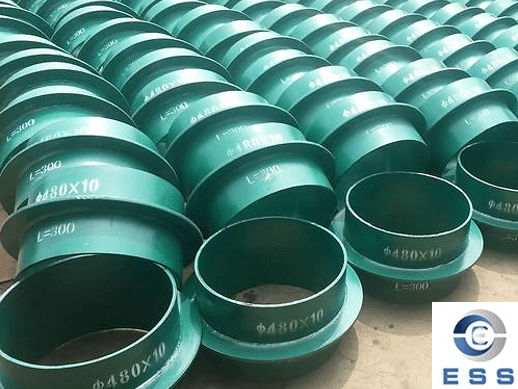
How to Determine the Appropriate Length
of Steel Casing Pipe?
The length of steel casing pipe is
determined based on the pipe diameter, installation environment, and usage
requirements. It generally follows a standard length range, but customization
is required in special circumstances.
Steel casing pipe is a widely used pipe
protection material in construction, water conservancy, chemical engineering,
and other fields. Its length has a significant impact on project installation
and operational performance. So, what is the appropriate length for steel
casing pipe? This article will analyze this from multiple perspectives to
better understand how to determine steel casing pipe length.
Main Factors Affecting Steel Casing Pipe
Length
1. Pipe Diameter
Generally, the larger the pipe diameter,
the longer the steel casing pipe length required to ensure stability and
overall strength.
For example, small-diameter pipes
(DN15-DN50) are often cut in 6-meter lengths; medium-diameter pipes
(DN100-DN300) are often cut in 9-meter or 12-meter lengths; and large-diameter
pipes (DN400 and above) are often custom-made and welded in sections.
2. Installation Environment
Underground pipelines: Consider soil
moisture, corrosiveness, and groundwater levels. Extended casing pipe and
anti-corrosion treatment are generally required.
Above-ground/open-air installations: Due to
the effects of climate, UV rays, and wind loads, the casing pipe length may be
appropriately increased to enhance overall rigidity.
Water well/pile foundation projects: Steel
casing pipe is often used as casing pipe and often requires welding in
sections. Single sections can reach lengths of 12–18
meters.
3. Usage Requirements
Pressure-bearing/load-bearing casing pipe:
Suitable for oil and gas transmission and high-pressure fluid pipelines. The
casing pipe should be extended to enhance protection.
Protective/decorative casing pipe: When
used solely for wear protection or decorative purposes, 6-meter pup joints can be used to reduce transportation and construction costs.
Steel Casing Pipe Length Standards
Steel casing pipe is often shipped in fixed
lengths. Common options include:
1. 6 m
Suitable for short-distance
pipeline protection or indoor construction, with low transportation costs.
2. 9 m/12 m
Used for long-distance pipeline projects to
reduce welding nodes (according to SY/T 5768-2016 standard).
3. Customized Segmented
When projects require deep wells or
large-span casing pipe, 15-18m segmented welding can be used.
Note: The actual length tolerance is ±500mm. Casing pipe for deep well pile foundations may require
segmented welding (single segment ≤ 18m).
Length Variations of Different Steel Casing
Pipe Specifications
Steel casing pipe comes in a variety of
specifications, with common sizes including DN15, DN20, and DN25. Lengths also
vary within different specifications.
1. DN15-DN20
Common lengths are 6 meters, primarily used
for indoor water pipes and cable protection pipes.
2. DN25-DN100
Mostly 9 meters, suitable for medium-sized
piping systems.
3. DN150–DN400
12-meter lengths are commonly used, widely
used in municipal and energy pipelines.
4. DN500 and above
Mostly custom-made, shipped and installed
in sections, with each section not exceeding 18 meters.
Of course, this is only a common length
standard; actual lengths may vary depending on the manufacturer.
How to Choose The Appropriate Length for
Steel Casing Pipe
When selecting steel
casing pipe length, users should consider the above factors and make a
decision based on actual circumstances. Here are some suggestions:
1. Understand Project Requirements
Before selecting steel casing pipe, first
clarify the specific project requirements, including pipe diameter,
installation environment, and usage requirements.
2. Reference Standard Lengths
After understanding the project
requirements, you can refer to the standard length range available on the
market. If a standard length meets your needs, consider using standard-length
steel casing pipe.
3. Consider Custom Options
If standard steel casing pipe lengths do
not meet your needs, or if a custom length is required, you can communicate
with the manufacturer and provide detailed project parameters and application
requirements so that the appropriate length can be customized.
Summary
In summary, selecting the appropriate steel
casing pipe length requires comprehensive consideration of multiple factors,
including pipe diameter, installation environment, and application
requirements. By understanding these factors and considering standard lengths
or custom options, users can ensure that the selected steel casing pipe meets
project requirements and provides excellent protection.
Read more: How To Choose The Size of Steel Casing Pipe? or A Comprehensive Guide To Steel Casing Pipe









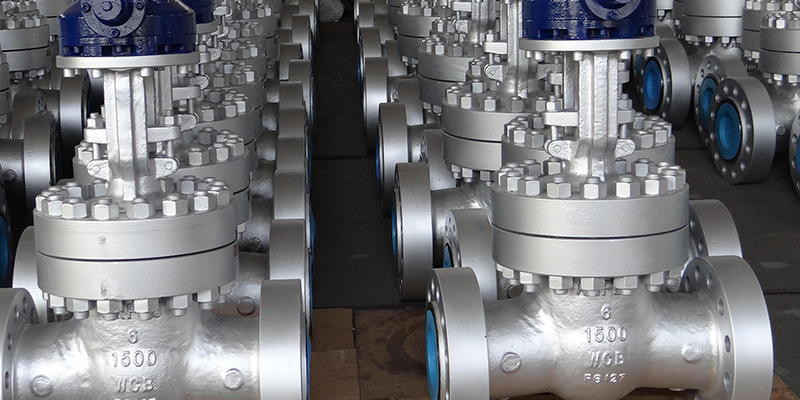
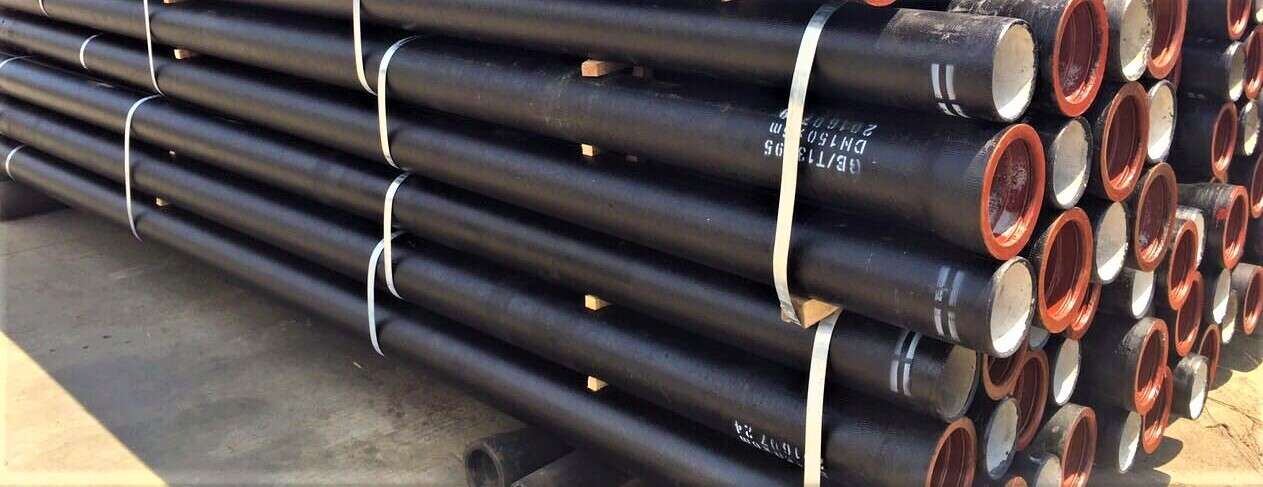


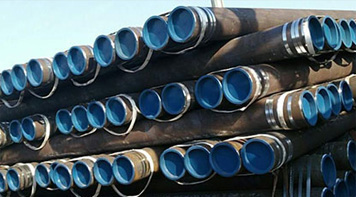 Eastern Steel Manufacturing Co.,Ltd not only improve product production and sales services, but also provide additional value-added services. As long as you need, we can complete your specific needs together.
Eastern Steel Manufacturing Co.,Ltd not only improve product production and sales services, but also provide additional value-added services. As long as you need, we can complete your specific needs together.
